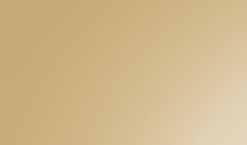
5 minute read
What’s So Special
NEW AGREEMENT WILL CONSERVE THREATENED STEELHEAD AND SECURE WATER OPERATIONS ON THE CALAVERAS RIVER FOR 50 YEARS
By Midpeninsula Regional Open Space District, Open Space Newsletter
The National Oceanic and Atmospheric Administration - Fisheries has approved a final Habitat Conservation Plan (HCP), sponsored by Stockton East Water District (Stockton East), for the Calaveras River that is designed to protect threatened fish species while also providing long-term security for crucial water operations through 2070. Stockton East has committed to an array of conservation actions to benefit fish populations on the Calaveras River over that time period.
The Water District is proud that the Calaveras River supports a healthy steelhead population, said General Manager Scot A. Moody. “The District is thrilled that it can support the fishery while at the same time protecting the needs of our agricultural and municipal water users,” he said. “We’re making a commitment, and we get some certainty in return.”
“This is an exciting step in conserving steelhead in a lasting way that works for everyone,” said Erin Strange, NOAA Fisheries Supervisory Fishery Biologist for the San Joaquin River Basin. “We’re committed to partnering with Stockton East and other stakeholders on the Calaveras River to support a healthy watershed and reliable water supply.”
The HCP’s fish conservation actions primarily focus on Central Valley steelhead,
DISTRICT INFORMATION HERE
DISTRICT SIZE: 65,000 ACRES POPULATION: 770,000 LOCATION: SANTA CRUZ MOUNTAINS WEBSITE: OPENSPACE.ORG YEAR ESTABLISHED: 1972
which are listed as threatened under the Endangered Species Act (ESA). Rainbow trout and Chinook salmon will also benefit. Conservation actions include a guaranteed minimum flow in key fish habitat, screening water diversions, improving fish passage over structures, water conservation measures, and continued fisheries research and monitoring on the Calaveras River. Annual summertime monitoring has shown that the Calaveras River supports a healthy population of rainbow trout, some of which turn into steelhead. Although the population declined during the peak of the recent drought, it has since recovered to pre-drought abundance levels.
“There is something here for everyone,” said Monica Gutierrez, Fisheries Biologist, who has led the development of the HCP for NOAA Fisheries’ Central Valley Office in Sacramento. “The Water District gets security and predictability in its water supply while we are also improving conditions for fish in key habitat at a critical time.”
The plan covers the area of the lower Calaveras River from New Hogan Reservoir to the confluence with the San Joaquin River. Stockton East makes water available to a population of 358,000 within the greater Stockton urban area, approximately 6,373 agricultural parcels, and includes approximately 143,000 acres located in San Joaquin and Calaveras counties. This agreement protects existing uses of water in the district from alleged violations of the Endangered Species Act, providing stability and continuity for both water operations and conservation measures.
The final plan is the culmination of a 13-year plus effort. Stockton East has invested significant funding in the development of the plan since 2003 and will commit an estimated $200,000 to $400,000 per year to implement the activities required by the agreement, as well as the cost of fish screens and other required improvements.
Since Habitat Conservation Plans were first developed in 1982, some 400 have been finalized nationwide; however, this is the first HCP completed by NOAA Fisheries in the Central Valley. HCPs are planning documents related to the “take” of threatened and endangered species, which includes killing, injuring, capturing, or harassing a species. The plans include the anticipated impacts of activities or development on sensitive species, as well as how those impacts can be minimized or mitigated.
“This plan is a result of an incredible amount of work over several years -- it’s a testament to the dedication of Stockton East Water District and our NOAA Fisheries staff who put immense energy and creativity into developing an approach that provides the infrastructure, science, and species protections to meet everyone’s needs,” said Cathy Marcinkevage, NOAA Assistant Regional Administrator.
More information about the plan, including a new video, is available on the SEWD website at: https://sewd.net/habitatconservation-plan/

Dogs at Work Provide Companionship and Camaraderie
The Stockton East Water District has maintained a ‘security detail’ of two dogs for over 25 years. Our current canine employees are Mia, a 7 year-old female yellow labrador mix, and Gus, a 2 year-old male black labrador mix. Our current dogs, like our past dogs, were both adopted from the local pound. Gus and Mia enjoy sharing employees’ lunches and chasing rabbits around our campus.
Electrician Brett Clark said the dogs “provide a sense of security because they always let you know when there is someone coming. Even better, they create a family type of atmosphere that is rare to have in the workplace.”
Agencies interested in incorporating dogs into their workplace should consider the outcome they are trying to achieve. Our first tip is to adopt dogs that you would adopt for yourself or for your family. We work for the public and want to maintain a welcoming facility, so friendly dogs are a must; plus we, like most other agencies, do not want to create unnecessary liability. Our dogs are here to provide companionship and protect our employees that work hard throughout the night to continue making potable water, not guard our facility and chase off passersby.
The biggest challenge is selecting the right dog for the environment, which can be difficult when selecting a rescue dog. If a dog is adopted and the dog turns out to be a poor fit, which has happened, we work to rehome the dog and then search for another suitable replacement.
“The best thing about having dogs at the plant is they give most of us something in common. Almost everyone has fun stories and pictures of them to share. These two are very loveable characters,” said Water Treatment Plant Operator Sheryl Morris.
California Special Districts Association 1112 I Street, Suite 200 Sacramento, CA 95814
PRSRT STD U.S. Postage PAID Permit No. 316 Sacramento, CA

















